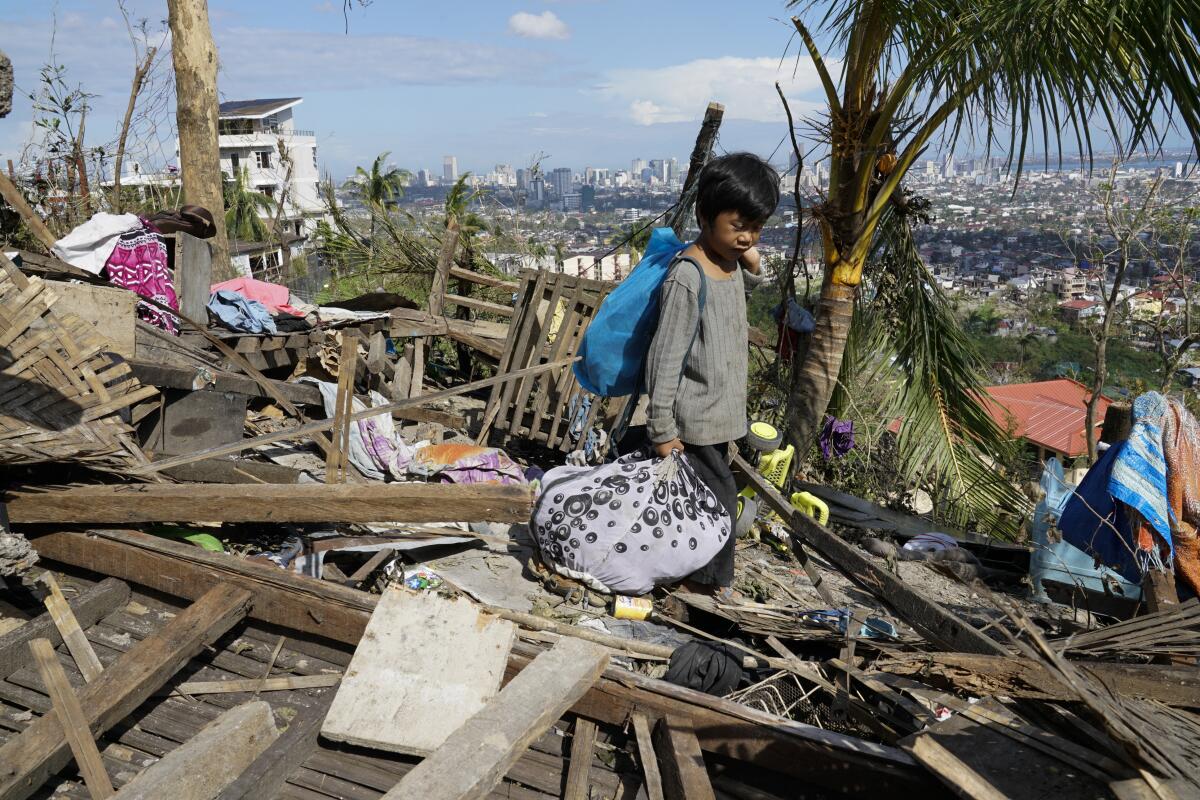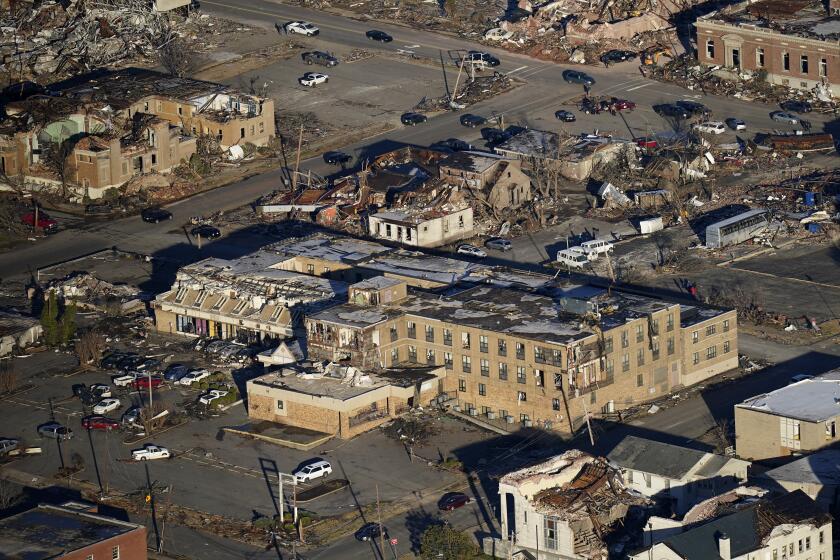At least 375 dead, 56 missing after typhoon slams Philippines

- Share via
MANILA — The death toll from the strongest typhoon to batter the Philippines this year climbed to 375, with more than 50 people still missing and several central provinces struggling with downed communications and power outages and pleading for food and water, officials said Monday.
At its strongest, the typhoon packed sustained winds of 121 mph and gusts of up to 168 mph before it blew out Friday into the South China Sea.
At least 375 people were killed, 56 were missing and 500 were injured, according to the national police. The toll was expected to increase as several towns and villages remained out of reach because of downed communications, power outages and clogged roads, even though massive cleanup and repair efforts were underway with the improved weather.
Many were killed by falling trees, collapsing walls, flash floods and landslides. A 57-year-old man was found dead hanging from a tree branch, and a woman was blown away and died in Negros Occidental province, police said.
Governor Arlene Bag-ao of Dinagat Islands, which was among the southeastern provinces first hit by the typhoon, said Rai’s ferocity in her island province of more than 130,000 residents was worse than that of Typhoon Haiyan, one of the most powerful and deadliest typhoons on record, which devastated the central Philippines in November 2013 but did not inflict any casualties in Dinagat.
“If it was like being in a washing machine before, this time there was like a huge monster that smashed itself everywhere, grabbed anything like trees and tin roofs and then hurled them everywhere,” Bag-ao told the Associated Press by telephone. “The wind was swirling north to south to east and west repeatedly for six hours. Some tin roof sheets were blown away, then were tossed back.”
A new study says winter tornadoes are likely to be stronger and stay on the ground longer as the world warms.
At least 14 villagers died and more than 100 others were injured by flying tin roofs, debris and glass shards and were treated in makeshift surgery rooms in damaged hospitals in Dinagat, Bag-ao said. Many more would have died if thousands of residents had not been evacuated from high-risk villages as the typhoon approached.
Like several other provinces, Dinagat remained without electricity and communications, and many residents in the province were now in need construction materials, food and water. Bag-ao and other provincial officials traveled to nearby regions that had cellphone signals to seek aid and coordinate recovery efforts with the national government.
More than 700,000 people were lashed by the typhoon in central island provinces, including more than 400,000 who had to be moved to emergency shelters. Thousands of residents were rescued from flooded villages, including in Loboc town in hard-hit Bohol province, where residents were trapped on roofs and trees to escape from rising floodwaters.
Coast guard ships ferried 29 American, British, Canadian, Swiss, Russian, Chinese and other tourists who were stranded on Siargao Island, a popular surfing destination that was devastated by the typhoon, officials said.
Toward a more sustainable California
Get Boiling Point, our newsletter exploring climate change, energy and the environment, and become part of the conversation — and the solution.
You may occasionally receive promotional content from the Los Angeles Times.
Emergency crews were scrambling to restore electricity and cellphone service in 227 cities and towns, officials said. Power had been restored in only 21 areas so far. Cellphone connections in more than 130 cities and towns were cut by the typhoon, but at least 106 had been reconnected by Monday, officials said. Two local airports remained closed except for emergency flights, but most others have reopened, the civil aviation agency said.
Bag-ao and other officials were concerned that their provinces may run out of fuel, which was in high demand due to the use of temporary power generators, including those used for refrigerated warehouses with large amounts of COVID-19 vaccine stocks. Officials delivered vaccine shipments to many provinces for an intensified immunization campaign, which was postponed last week due to the typhoon.
At the Vatican, Pope Francis expressed his closeness Sunday to the people of the Philippines, referencing the typhoon “that destroyed many homes.”
More to Read
Sign up for Essential California
The most important California stories and recommendations in your inbox every morning.
You may occasionally receive promotional content from the Los Angeles Times.










